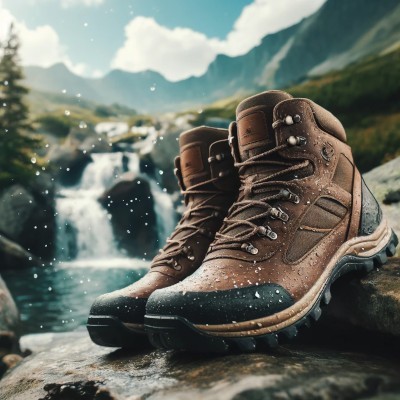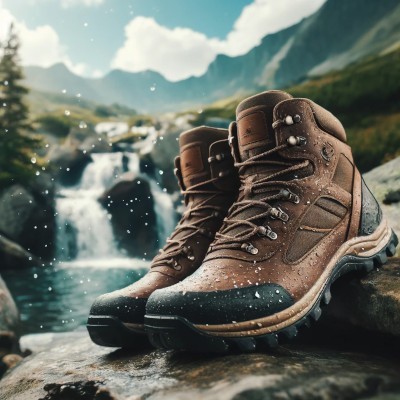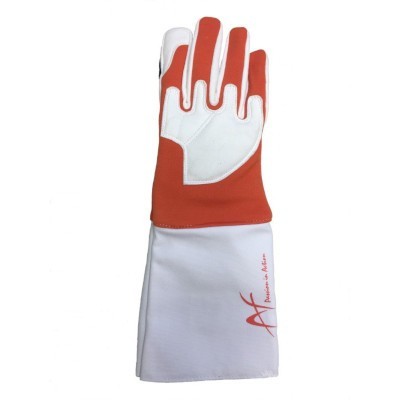How to Choose Hiking Boots

How to Choose Hiking Boots
To venture into nature and experience top-notch trekking, it's crucial not just to examine the route and select the right equipment, but also to choose the most appropriate footwear. Although a universal shoe does not exist, the essential thing is to find the most suitable model of trekking shoe for the intended use. Identifying the optimal footwear in relation to the type of walk involves assessing various elements before setting off. These include the nature of the terrain, the length of the journey, and the load of the backpack.
Nature of the Terrain, Length of the Journey, and Backpack Load The first crucial point is todetermine the type of terrain to be faced: whether it will be flat and homogeneous or, conversely, mountainous and heterogeneous. This is because obstacles such as rocks, roots, and mud, as well as slopes, can significantly strain legs and ankles. Naturally, another aspect to consider is the duration and extent of the intended route, as these will depend on the bulk of the backpack to be carried. For short daily hikes, a small backpack will suffice. However, for multi-day mountain expeditions, the backpack will be heavier, and therefore the shoe must be more sturdy and substantial, providing the necessary support and stability.
Generally, there are three types of mountain shoes available: Trail running shoes are designed for running on trails. They offer lightness and flexibility, with aggressive soles for traction on variable terrains. Protection is balanced to maintain speed without sacrificing safety.
Low hiking shoes, similar to sports shoes, are suitable for light hikes and easy terrains. They offer comfort and flexibility, with good grip. They are ideal for warm days and non-technical paths, ensuring agility.
High hiking boots and shoes are robust, providing maximum ankle support and protection. Their construction is designed for difficult terrains and heavy loads, with stiff and durable soles. They are the preferred option for adventurous trekking.
Sole Grip
The crucial component for a trekking shoe remains the sole, essential in mitigating shocks and strains during the walk and in ensuring superb grip on the ground. High-quality soles boast significant lugs and incisions, optimized for attacking muddy, bubbling, and sandy terrains, dynamically adapting to various roughnesses. At the top of the sector is the Vibram sole, famous for the use of advanced compounds that enhance its functionality, making it a favorite choice among outdoor enthusiasts.
Protection Reinforcements
Along a trail, there are many obstacles that may need to be overcome: rocks, roots, stones, and ground protrusions that can cause you to trip or sustain painful injuries. A good pair of trekking shoes should have reinforced toe and heel in hard rubber, to deflect any shocks. These reinforcements, strategically placed, not only protect from direct impacts but also contribute to preserving the structural integrity of the shoe over time. In addition, some shoes include side protection bands and overlay layers in abrasion-resistant materials, like Kevlar, for 360-degree coverage. These additions increase the shoe's resistance against the most aggressive elements of trekking, from rough terrains to sharp branches, ensuring greater durability and offering an additional barrier against moisture and debris. The result is a shoe that not only protects the feet during the most challenging hikes but also maintains its optimal performance longer, making every step secure and protected.
Stability and Protected Ankles
During prolonged mountain hikes, the stability of the shoe is as crucial as the grip. It is essential that the footwear offers ankle support for this reason. It is remembered that the low variants adapt better to forested, flat, and regular paths, while the high ones minimize foot movement within the shoe, ensuring superior ankle protection. High versions are indicated for rugged paths with irregular surfaces, or for those who, having already experienced ankle injuries, intend to prevent further sprains. They are also suggested for hikers carrying heavy loads, as they help prevent imbalances and losses of stability along the path.
Breathability and Waterproofness
For trekking enthusiasts in any weather condition, selecting suitable footwear for adverse environments is crucial. Rain, humidity, and mud can compromise foot health during hikes. It's fundamental to keep feet dry, so it's essential to opt for shoes with waterproof fabrics, capable of withstanding the fording of minor watercourses, regardless of the season. The footwear must be waterproof, but without neglecting breathability to avoid sweating. Gore-Tex, with its synthetic fabric and extraordinary waterproofness thanks to microporous polytetrafluoroethylene, meets these requirements, offering protection from water and high breathability.
Best Materials for the Upper
The breathability and waterproofness are influenced by the quality and type of material used for the upper in trekking shoes. This, the upper part that surrounds the foot and houses the laces, is fundamental. Uppers for trekking can be manufactured in:
Leather
Leather, or full-grain leather, is known for its extraordinary resistance and capability to protect in various weather conditions. It's a natural material that, over time, adapts to the shape of the foot, offering personalized comfort. However, it requires regular maintenance to maintain its flexibility and water resistance. Leather is ideal for challenging hikes and in rugged environments.
Suede
Suede, obtained from the inside of the skin, is softer and more flexible than traditional leather. This softness makes it comfortable from the first use, but less resistant to water and abrasion compared to full-grain leather. It's preferred for light trekking and in less extreme conditions.
Nubuck
Nubuck is similar to suede but comes from the outside of the skin, making it slightly more resistant and durable. It has a finely grained appearance that hides scratches and wear well. It offers a good compromise between comfort and resistance to the elements, but like suede, requires care to maintain its waterproofness.
Synthetic Fibers
Synthetic fibers, like nylon and polyester, are lightweight, highly breathable, and dry quickly, making them excellent choices for trekking in warm and humid climates. They don't offer the same level of protection or durability as leather options, but are often more affordable and require less maintenance. They are ideal for hikers looking for high-performing footwear with a lower environmental impact and less need for care. Among synthetic fibers, Gore-Tex stands out for its unique properties: besides being lightweight and breathable, it offers extraordinary waterproofness. This material allows sweat to be expelled while keeping feet dry from the inside, while preventing external water from penetrating, thus ensuring an excellent balance between protection and comfort in various weather conditions.
Comfort and Lightness
In addition to these features, it's crucial that the trekking shoe is lightweight and maximizes comfort, ensuring adequate mobility to the foot. A shoe that is too heavy can increase physical fatigue, hindering the achievement of the goal, even for those who are well-trained and in good physical shape. Lightness and comfort are indispensable attributes also for trail running footwear.
But in the end, what is the right size?
In selecting new trekking shoes to tackle rugged mountain trails, it's crucial to choose the correct size for one's feet. Generally, it's recommended to select a size slightly larger than that of usual daily footwear, for two main reasons: first, it's advisable to wear thicker socks or sponge socks during trekking, which, being bulkier compared to standard socks, require more space inside the boot to ensure comfort; secondly, it's appropriate to allow the feet a certain degree of freedom inside the shoe to prevent the toes from being compressed against the reinforced toe during descents. However, it's important not to overdo the size: an excess of space can cause the formation of painful blisters that would ruin the walking experience.




Comments
No comment at this time!
Leave your comment